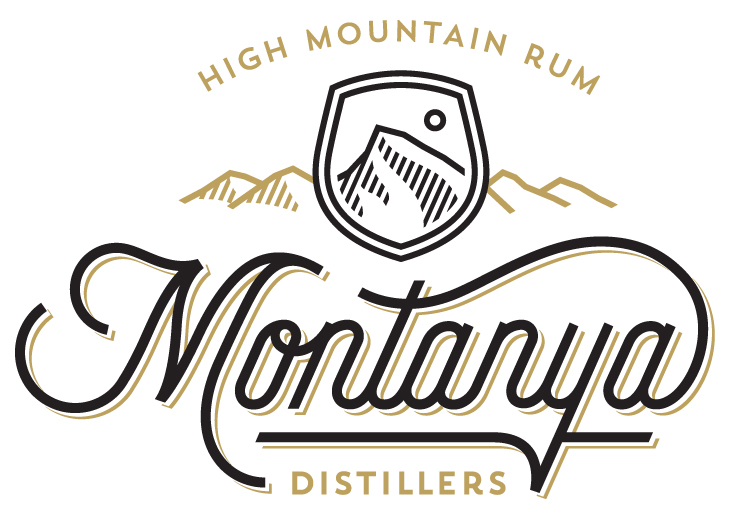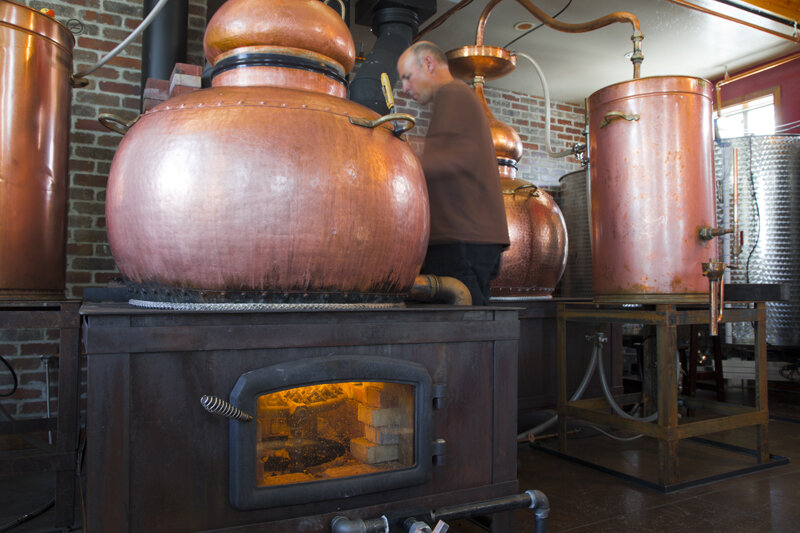Classifying Montanya Rum
If you’ve read our guide to the different types of rum you may be wondering how Montanya rums stack up to the characteristics that our founder and owner, Karen, uses to evaluate rum.
We’ve always believed that finding the rums you like is a process that’s one part experiment (tasting and determining what you like) and one part getting to know the maker. And because you can only get to know the maker if makers are transparent and honest about what they make and how, we work hard to up front and honest about our rums. Here’s how to understand Montanya Rums:
Sugar Cane
We make rum with every part of goodness that sugar cane has to offer, apart from the fibers (bagasse) and water. The fine folks at the Lula Sugar Mill in Louisiana run the sugar cane stalk through a press one time to extract sugar cane juice. That juice is then heated in a boiler and crystalized under vacuum pressure. The crystalized juice then gets put in a centrifuge to separate the raw sugar cane from the molasses.
Both the sugar cane and the molasses then get packed in reusable containers and shipped to Crested Butte, Colorado, where we use it to make rum—about 88% raw sugar cane and 12% unrefined molasses. In essence, the process of separating the sugar cane from the molasses arrests fermentation so we can ship it to the mountains. Without doing so, the fresh sugar cane juice would start to naturally ferment with wild yeast (yeast that naturally exists in the air).
From the beginning, Karen also knew that she wanted to make rum from the whole plant, not just the molasses. When tasting international premium rum, she prefers the flavor of the rums that are made from the full plant. And when it comes to environmental sustainability, it just makes sense to use as much of the plant as possible and avoid any waste. Table sugar requires many additional layers of treatment and refining, which seems to us like a loss of the beautiful flavors of the unrefined elements of cane.
Origins
Montanya Rums are all American. Every ingredient in the bottle originates in the USA: sugar cane from Louisiana, mountain water from Colorado, and in some the tiniest touch of Colorado honey—not as a sweetener but because the acidity brings out the flavors of the rum. (However, stay tuned about the future of honey in Montanya rums due to the precarious status of the honey bee in Colorado.)
On a side note, American rums are actually an interesting subject right now, because there aren’t necessarily the similarities between them that you might find in other places of origin. Curious? Karen goes deep on the subject in an interview with the Cocktail Wonk.
Pot Distilled vs. Column Distilled
Montanya Rum is 100% pot distilled, a practice that tends to yield a richer, more robust and flavorful spirit. We also distill over a direct flame, which ramps up the characteristics of pot distillation. The wash inside the still caramelizes due to the open flame, producing even more interesting and character-full flavor profiles. It also keeps our distillers on their toes because it can be harder to control the temperature and therefore more artful to separate the heads, hearts and tails.
Montanya Co-founder Brice Hoskin designed the “stove boxes” where we heat the stills over a direct flame. That flame causes a caramelization of the wash, producing even more flavor in the final rum.
Blended vs. Single Barrel
Montanya Platino and Montanya Oro are both single-barrel rums aged for more than one year. The Exclusiva is a double maturation, aged for a total of three years—in one barrel for two and half years and then transferred to a finishing barrel for six months. The limited release Aniversaria was a triple maturation, aged for a total of four years. Valentia is double maturation—in one barrel for nearly four years and a second barrel for three months. You can learn more about the specific aging practices for each rum here.
Types of Barrels
We clearly identify our barrels in our product descriptions and in the transparency section of our website because we want our customers to know what they’re purchasing and consuming. All of our rums start out in a Laws Whiskey barrel for one to four years. The Exclusiva is finished in a Cabernet Sauvingon and Port barrel, and our limited release Aniversaria was also finished in a Peach Street Distillers Bourbon barrel. The newly released Valentia was finished in a Rye barrel from Catoctin Creek.
As we discussed in our guide to the different types of rum, the barrel(s) impart a lot of flavor into the rum. We use only secondary casks because we appreciate their role in creating the types of rum that we like to drink, and because of our commitment to environmental sustainability by not using new oak. We prefer to give an old barrel new life.
We purchase most of our barrels from Laws Whiskey House because we think that the whiskey previously held in the barrel was exceptional, and because they are a Colorado company. It also has an element of red chili spice that is very unique and has become a characteristic of Montanya rums. You will never see Montanya take any barrel we can get—we are highly selective in our barrel programs.
Aging
To many people’s surprise, all of Montanya rums are aged—even Montanya Platino white rum. You can find detailed information about how we age our rums in our product descriptions, our overview of distilling and the transparency section of our website. We also include clear aging statements on our labels.
Montanya Founder and Owner Karen Hoskin shows off raw sugar cane in the rack house, where the barrels behind her age rum. (For a closer look at Sugar Cane, check out the Secrets of Sugar Cane.)
Additives
We do not add any artificial colorings, flavors or sugar sweeteners, and we do not add “natural” flavors or colors either. We do add the tiniest touch of caramelized Colorado honey to our some of our rums at bottling—less than .04% percent of every bottle (an ingredient we choose to disclose even though we are not required to do so, because it is less than 2% of the bottle).
Many people confuse the addition of this honey with being a sweetener or think that it makes our products “honey” rums. We have traditionally added the honey because even at such minute amounts, the acidity of the honey brings out the natural flavors of the rum acquired during distillation and aging. It is part of what makes our rums unique.
That said, we do worry about the status of Colorado honey bees, whose colonies unexplainably died off at a rate of 30% between 2017 and 2019. We are taking a hard look at the honey production process in Colorado through the lens of our B Corp certification to be sure it is a supply we can feel comfortable using. We may eliminate this minor contribution in 2020.
Proof
All Montanya rums are 80 Proof, or 40% alcohol by volume (ABV).
Why All this Information Matters
If you want to read about each of these categories in depth and how to assess them when picking out a rum, check out our guide to understanding the different types of rum. In it, we dispel the myth that color (white or light vs. dark rum) is a good indicator of flavor or other characteristics, and why you can’t always trust an age statement. We also provide more context for each of these seven characteristics to consider when selecting a rum.





